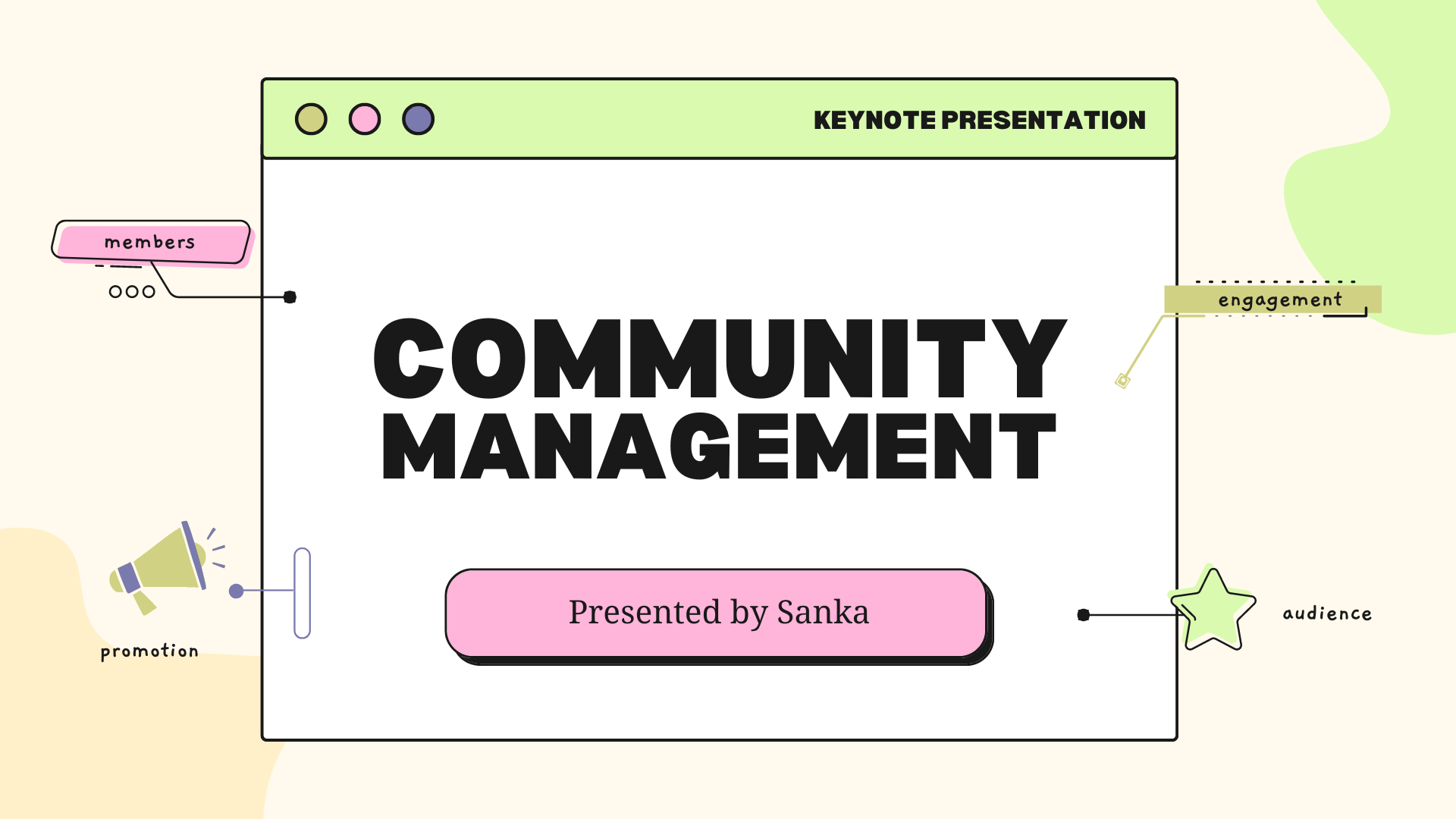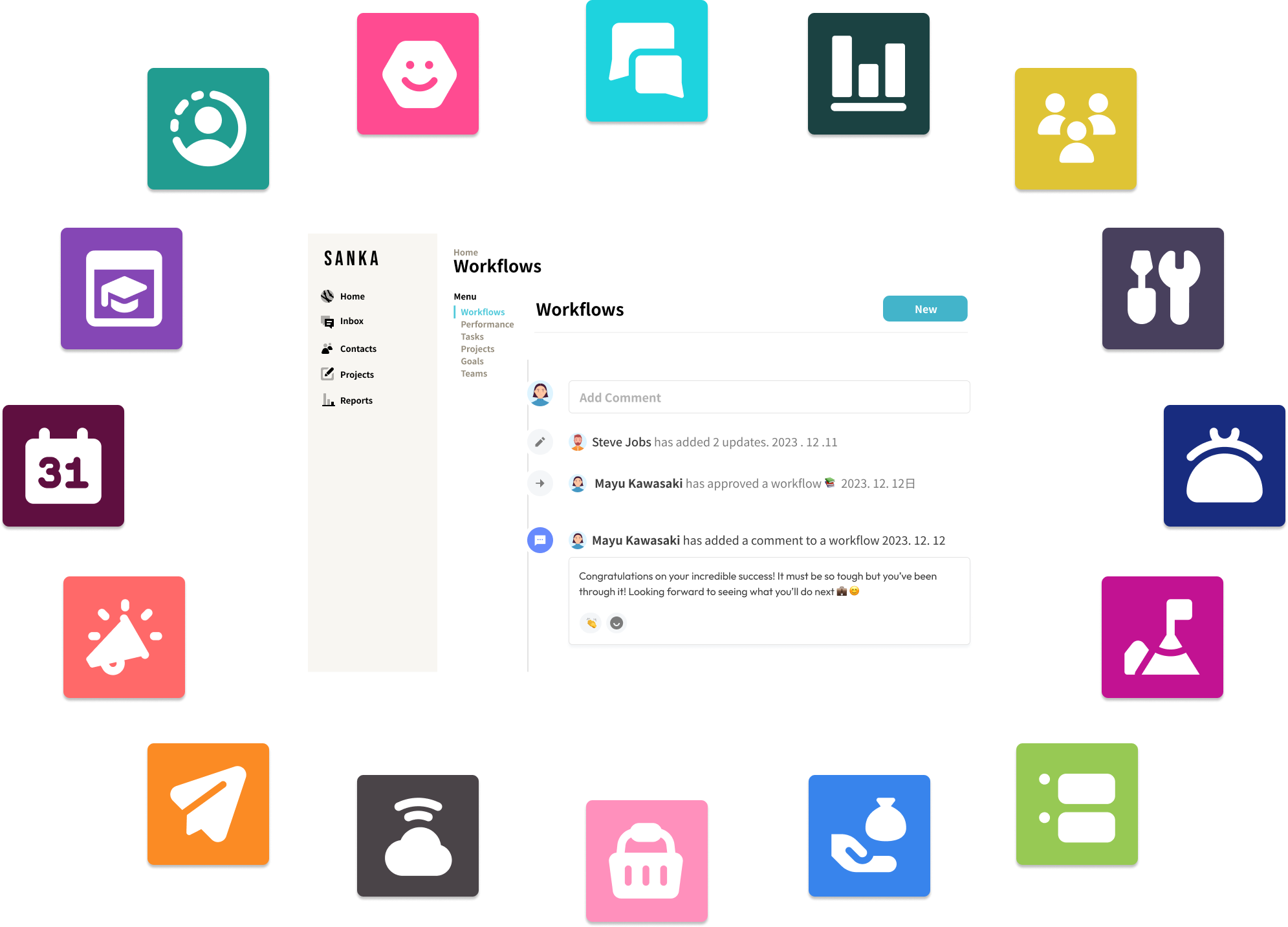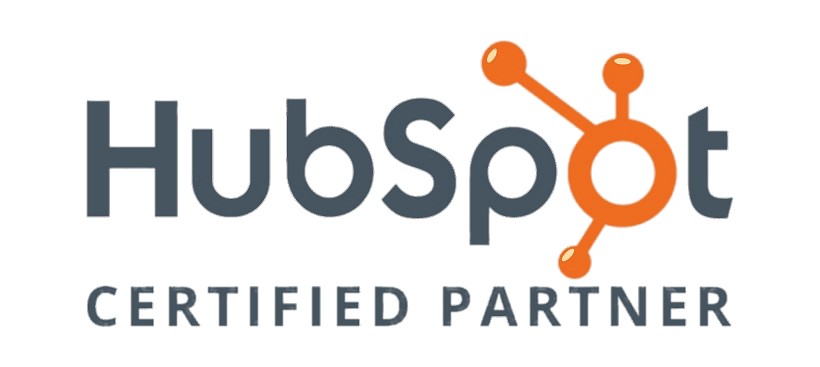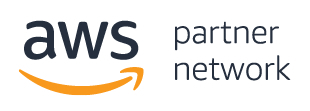Hello, community builders 👋
Building a thriving community is one of the most effective growth strategies for your organization - and to be honest, it's one of the most rewarding things you can do at work.
Yet optimal community management practices remain poorly understood by business leaders. Why is this?
There are several reasons, but we believe the most important one is that the way communities are built has changed dramatically over the past few years.
Communities themselves have existed for thousands of years, and their definition has not changed for a bit. However, with the spread of digital devices and the revolution in the way people work (e.g., remote work), today’s communities have become more digital, more diverse, and closer.
Community management is also undergoing a reevaluation of its methods with these major changes, and new practices are being developed every day.
This guide is the culmination of insights gained from the thousands of hours of research and client work we have done at Sanka over the past several years.
If you run an online community, or if you want to run an online community, this guide is for you.
It turns out to be a lengthy article as it covers all topics related to community management, but we hope it will be an enjoyable journey where you will learn a lot.
Let's get started.
What Community Management Is
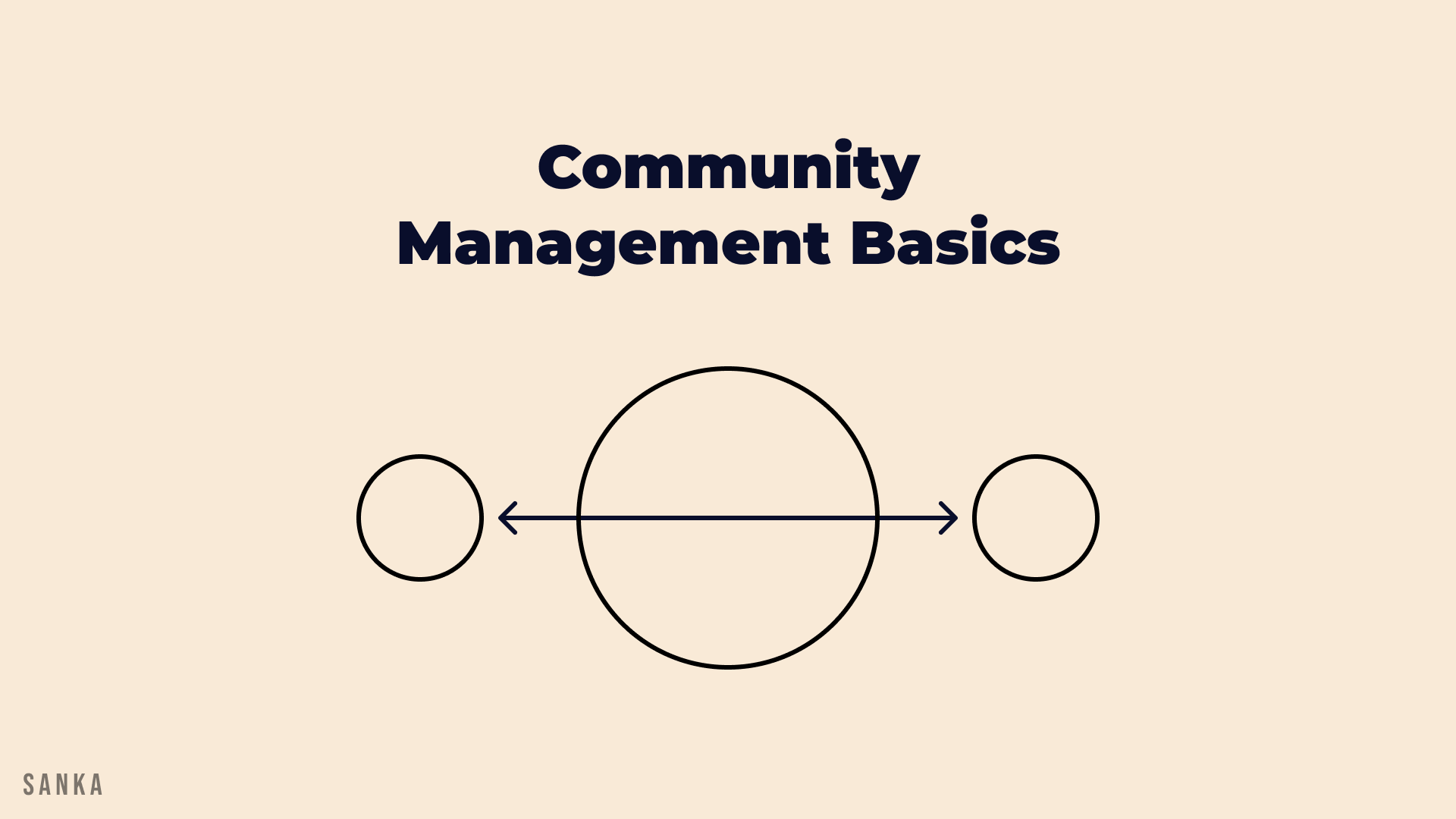
We define "community management" as a business practice of using various mediums (such as social media, newsletters, and events) to build and engage communities of customers, partners, teammates, and other stakeholders.
Today, community management is adopted by businesses of all sizes, from startups to global brands.
Community management sounds simple enough in concept, yet it is perceived as one of the hardest tasks for many marketers, customer support agents, and alike.
Why? Because today’s community activities are all over the place and the demands of communities are evolving quickly.
Don’t worry though. The basics of community management remain the same for years.
At its core, community management is about doing everything you can to engage your members, fans, customers, followers, prospects, partners, and other stakeholders to create a positive experience for everyone in the community.
The goal of community management is to drive business growth while building and maintaining relationships among the people within a community.
We emphasize business growth because unless you prove the ROI of community management in one way or another, it'll be hard to get buy-in from your organization and keep investing in your community.
Community management can be done in many ways: through IRL conferences where like-minded people get together for networking, or through educational Zoom sessions to help each other learn about hot trends that are relevant to the community.
Community management is not for everyone and every organization. But at the same time, it's not just for big brands or global enterprises. Any organization small or large can adapt to community-driven business growth.
In the following chapters, we're going to learn how to approach community management, but before that, let's first learn important concepts and definitions.
Key Concepts
Community Channels
Community channels are places where community members can come together to communicate, work on projects, share ideas, and collaborate.
One of the most important jobs as a community manager is to identify the best channel for her community: What kinds of social media do members use most? How frequently do they use? Do they prefer online? offline? These questions need to be answered before building a community.
Once you have a good understanding of the preference, you can start to secure a channel and start inviting initial members. Here are some of popular choices.
- Forums: Discourse, WordPress, etc.
- Chat rooms: Discord, Slack, Telegram, etc.
- Social media: Facebook, Twitter, Instagram, etc.
- Newsletter: Mailchimp, Substack, etc.
- IRL: event venues, office rooms, etc.
Once the community channel is up and running, it’s important to maintain it well. This means regularly checking in with your community to understand what they need and how they want to community in your community.
Community Members
Community members are simpoly people who are part of a community. These days how people interact with a community varies - it can be just following an account or being an active contributor.
This is why we emphasize the importance of community membership, which we’ll talk about more detail later.
Why is community management important? [4 Benefits]
Community management is a growing field, and for good reason. Well-managed communities can create a loyal customer base while building a strong differentiator over competitors.
Let’s look at the benefits of community management. It can…
- provide deep insights into products and services
- increase customer engagement and loyalty
- establish expertise and thought leadership
- reduce customer support time and cost
What do globally successful businesses like Nike, Apple, BTS, Patagonia, and Disney all have in common?
Yes, you got it right. It’s a community.
Let's go through the benefits of community management with an example from Apple.
Apple's fanatic community members (whatever they’re actually called - followers, customers, reviewers, etc.) give the company tremendous learning opportunities to define its product roadmap. At Genius Bars around the world, Apple gathers feedback from core users and uses those insights to build the next iPhone.
Apple actively engages with its community (such as through events organized almost every day at Apple Stores), to get the community members more engaged and loyal to the Apple brand. These members will likely purchase whatever Apple offers, be it services or products.
Community management can also help to create a positive image for the company. A company with a well-run community can be seen as a thought leader in its niche. It's well known that Apple focuses on improving environmental impact. What's not well known is that they leverage the power of the community to accelerate progress. For example, Apple runs an accelerator to speed up the transition to a green economy.
Lastly, community management can build customer-to-customer relationships, radically improving the efficiency of customer support, and reducing the cost and time to offer support. Apple offers a support community where members resolve problems and handle complaints themselves, which is almost a dream for many companies.
It all sounds fantastic, right? We covered the benefits of community management in detail in this post. If you’re interested, check it out.
AME model - The Community Management Process
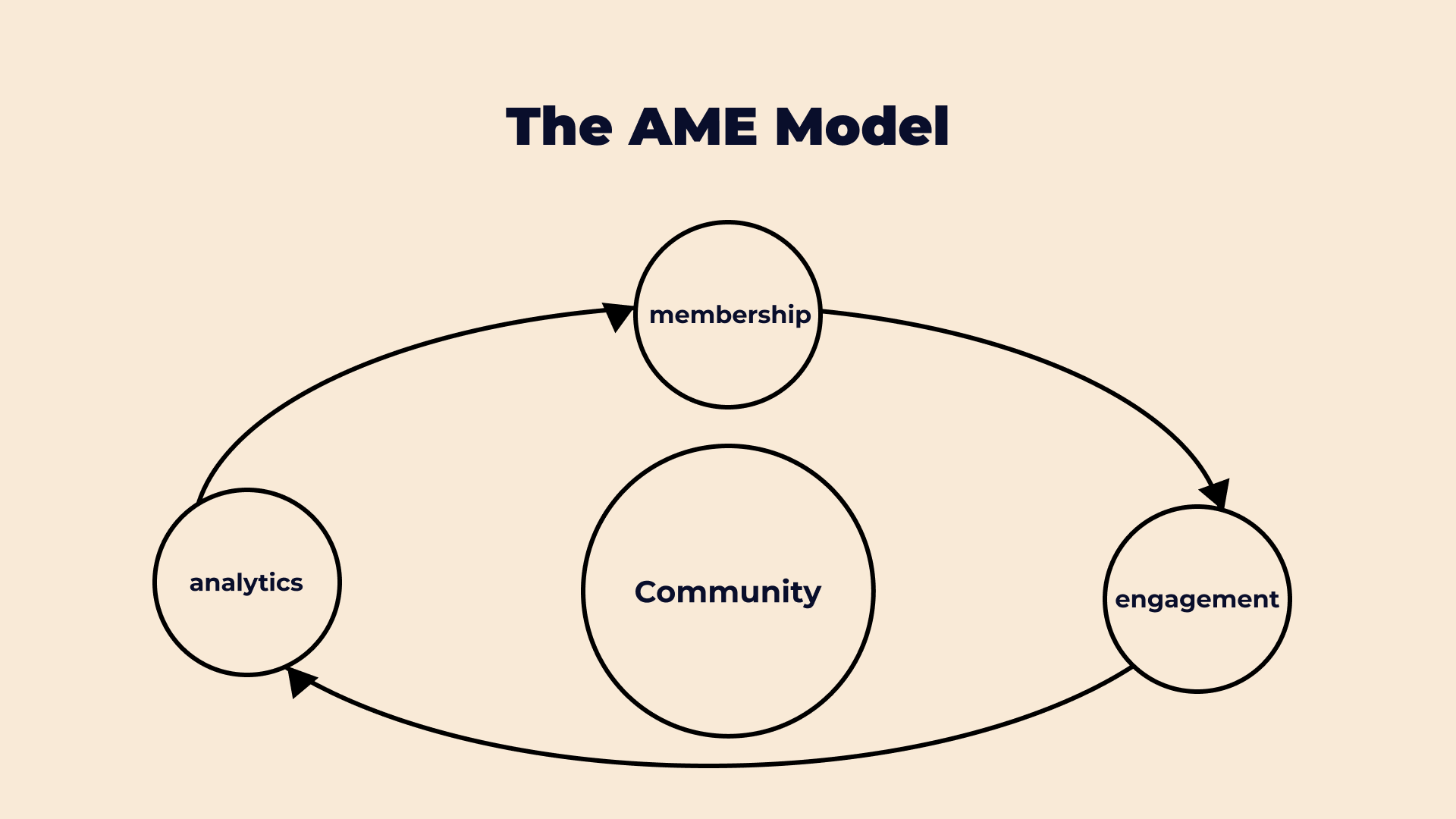
Okay, you now understand community management is all great.
However, building and maintaining communities requires regular effort.
Your community isn't static; its members, their needs, and communication channels are always in a state of change.
This means that the strategies you use to engage your community today may need to be adjusted as the community evolves.
Just like any other business strategy, community management is effective when it is applied strategically.
We created the process of community management called The AME model (Analytics, Membership, and Engagement) to make community management as strategic as possible.
Let’s dive into more details of the four pillars of community management.
Analytics
With analytics, you will measure and understand the community’s growth, needs, complaints, sentiment, and more.
It is important to listen to the community and accumulate knowledge about it by taking surveys and conducting interviews to better understand the issues faced by its members.
In addition, if a community is managed by a company, robust reporting is necessary to measure and output community KPIs to communicate with other stakeholders.
Membership
The critical thing about community management is identifying and offering membership values to community members (otherwise what’s the point of being a part of your community?).
The value can be as casual as organizing exclusive events for your members or giving away VIP tickets to concerts.
The point is, your community needs to be designed in a way that the roles and benefits are very clear for every member involved.
Engagement
As a community manager, your number one job is to keep your community engaged.
Community engagement refers to the relationship between a company/organization and members, as well as among members. A well-run community manages engagement very meticulously.
The two principles of community engagement are to be 1) consistent in your community activities and 2) responsive so that your community is being heard.
If you only engage the community when you have a new product or service to announce, they will become less and less interested in what you do.
Remember, a community is not about you, it’s about its members.
In this section, we learned the process of community management. Next, let’s look at some tips to run community management, based on advice from community pros.
Proven Tips for Community Management
We’ve helped many clients build and grow their communities. While supporting them, we’ve also accumulated practical know-how that leads to successful community management. In this chapter, we’ll introduce some of them.
While doing so, we learned community management is about building genuine relationships by providing value to the community. The continuous effort to engage your community is the only way to ensure long-term, sustainable growth.
Here are eight proven tactics you can use to build and grow your community.
- Use content to engage: “Content is king” is often used in the world of marketing. The same goes for the world of community management. Share blog articles about community progress, photos of community events, or Youtube videos of learning sessions. You can use the content as a key driver to get your community engaged.
- Design membership well: This one may seem obvious, but it’s important to engage your community by giving them exclusive benefits by being a part of your community. A well-designed membership will encourage members to engage with your community regularly.
- Solve problems: Community managers need to have a problem-solving mindset because community members always have problems - large or small. This is a big opportunity for you though. One of the most effective ways to interact with members is by offering a free service to solve their problems.
- Pay attention to communication frequency: Communities need to keep active on all of their community channels. However, community management isn’t about spamming members with your announcements. Ideally, your members run your community rather than you run it.
- Share bad news too: “Good news only” is a red flag in many cases. Being transparent with members is a key element of successful community management. Admit failures and learn from them rather than hide them. Community members are smart; they see it through anyways.
- Ask questions: The best way to get your community members talking is to ask questions. This is a great way to start a conversation and get your community engaged in a conversation about your project.
- Set up analytics: This is one of those obvious pieces of advice, but it’s important to keep an eye on your social media and community channel analytics to make sure that you are posting content that is engaging your community.
- Automate repetitive tasks: By using automation, you will be able to post content, engage your community, and keep your social media accounts active every day.
Community Management vs Social Media Management
Social media management and community management are often referred interchangeably and share some similarities, but the two are different.
**While social media management focuses on, as the name suggests, using SNS platforms like Twitter and Facebook to reach out to and engage with potential customers, community management is all about building and nurturing relationships with and among members regardless of the channels and method. **
Both approaches have their own strengths and weaknesses, but we see community management has a bigger operational scope and a larger leverage to drive business growth. This is proven by the fact that most successful enterprises today is ones with the most strong community.
The biggest difference between social media management and community management is where their communication happen; social media management focuses on social media, but the community can exist anywhere, whether it's on mobile app, newsletter, or even offline.
Another big difference is the objective of these two practices; social media management aims to build relationships with audience on social media. On the other hands, community management’s goal is building relationships with AND among members. Some of these members can be customers but they can be employees, fans, investors, influencers and more.
To sum, 1) where communication is done and how relationships are built are the two critical differences of these two practices.
Wrap-up and Next Action
When done right, community management helps companies expand its reach, improve its products, reduces its costs and even grow business. We hope this article helped you to outline the overview of community management and start building an engaging community.
As the next step, we encourage you start building a community because actually doing is the fastest way to master community management. If you’re stuck, let us know - we’re here to support you.
